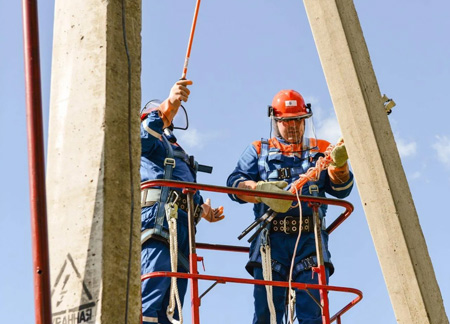
-
 Afrikaans
Afrikaans -
 Albanian
Albanian -
 Amharic
Amharic -
 Arabic
Arabic -
 Armenian
Armenian -
 Azerbaijani
Azerbaijani -
 Basque
Basque -
 Belarusian
Belarusian -
 Bengali
Bengali -
 Bosnian
Bosnian -
 Bulgarian
Bulgarian -
 Catalan
Catalan -
 Cebuano
Cebuano -
 Corsican
Corsican -
 Croatian
Croatian -
 Czech
Czech -
 Danish
Danish -
 Dutch
Dutch -
 English
English -
 Esperanto
Esperanto -
 Estonian
Estonian -
 Finnish
Finnish -
 French
French -
 Frisian
Frisian -
 Galician
Galician -
 Georgian
Georgian -
 German
German -
 Greek
Greek -
 Gujarati
Gujarati -
 Haitian Creole
Haitian Creole -
 hausa
hausa -
 hawaiian
hawaiian -
 Hebrew
Hebrew -
 Hindi
Hindi -
 Miao
Miao -
 Hungarian
Hungarian -
 Icelandic
Icelandic -
 igbo
igbo -
 Indonesian
Indonesian -
 irish
irish -
 Italian
Italian -
 Japanese
Japanese -
 Javanese
Javanese -
 Kannada
Kannada -
 kazakh
kazakh -
 Khmer
Khmer -
 Rwandese
Rwandese -
 Korean
Korean -
 Kurdish
Kurdish -
 Kyrgyz
Kyrgyz -
 Lao
Lao -
 Latin
Latin -
 Latvian
Latvian -
 Lithuanian
Lithuanian -
 Luxembourgish
Luxembourgish -
 Macedonian
Macedonian -
 Malgashi
Malgashi -
 Malay
Malay -
 Malayalam
Malayalam -
 Maltese
Maltese -
 Maori
Maori -
 Marathi
Marathi -
 Mongolian
Mongolian -
 Myanmar
Myanmar -
 Nepali
Nepali -
 Norwegian
Norwegian -
 Norwegian
Norwegian -
 Occitan
Occitan -
 Pashto
Pashto -
 Persian
Persian -
 Polish
Polish -
 Portuguese
Portuguese -
 Punjabi
Punjabi -
 Romanian
Romanian -
 Russian
Russian -
 Samoan
Samoan -
 Scottish Gaelic
Scottish Gaelic -
 Serbian
Serbian -
 Sesotho
Sesotho -
 Shona
Shona -
 Sindhi
Sindhi -
 Sinhala
Sinhala -
 Slovak
Slovak -
 Slovenian
Slovenian -
 Somali
Somali -
 Spanish
Spanish -
 Sundanese
Sundanese -
 Swahili
Swahili -
 Swedish
Swedish -
 Tagalog
Tagalog -
 Tajik
Tajik -
 Tamil
Tamil -
 Tatar
Tatar -
 Telugu
Telugu -
 Thai
Thai -
 Turkish
Turkish -
 Turkmen
Turkmen -
 Ukrainian
Ukrainian -
 Urdu
Urdu -
 Uighur
Uighur -
 Uzbek
Uzbek -
 Vietnamese
Vietnamese -
 Welsh
Welsh -
 Bantu
Bantu -
 Yiddish
Yiddish -
 Yoruba
Yoruba -
 Zulu
Zulu


lis . 25, 2024 20:57 Back to list
Comparing Pull Rods and Push Rods in Mechanical Applications
Understanding Pull Rods and Push Rods in Mechanical Systems
In the realm of mechanical engineering, pull rods and push rods are essential components used in various applications to transmit motion and force. Understanding the function and design of these rods is critical for engineers and designers, particularly in the fields of automotive, aerospace, and industrial machinery.
What are Pull Rods and Push Rods?
Pull rods and push rods are components that facilitate linear motion in mechanical systems. A pull rod is designed to transmit tensile forces, while a push rod transmits compressive forces. Essentially, pull rods pull parts together, whereas push rods push parts apart. While their operational principle is straightforward, the application of these rods can be quite complex, involving various mechanical linkages and systems.
Applications of Pull Rods and Push Rods
These rods play a crucial role in numerous applications. In automotive engineering, for instance, they are integral to the operation of engine valves and suspension systems. In valve actuation systems, push rods are employed to transfer motion from the camshaft to the valve, enabling efficient engine operation. Conversely, pull rods can be found in the suspension systems of vehicles, where they help to maintain the position of components under varying loads, ensuring comfort and stability in ride quality.
In aerospace, pull and push rods are used in flight control systems. The precise control of aerodynamic surfaces, such as ailerons and rudders, is vital for aircraft maneuverability. Push rods transmit pilot inputs to control surfaces, while pull rods ensure the system can respond effectively to forces experienced during flight. The reliability of these components is crucial, given the safety implications involved.
pull rod and push rod

Design Considerations
When designing pull and push rods, several factors must be taken into account. The material selection is critical, as these rods must withstand considerable forces and stresses. Engineers often choose materials such as aluminum, steel, or advanced composites, depending on the weight, strength, and corrosion resistance required for the application.
The geometry of the rods is another vital consideration. For pull rods, ensuring sufficient tensile strength without adding unnecessary weight is crucial, especially in weight-sensitive applications like aerospace. Push rods, on the other hand, must be designed to handle compressive loads without buckling, which demands careful consideration of their length and diameter.
Conclusion
In summary, pull rods and push rods are indispensable components in many mechanical systems. Their ability to transmit forces efficiently under various loads makes them vital in automotive, aerospace, and industrial applications. With advancements in materials and design techniques, the performance and reliability of these rods continue to improve, enabling more sophisticated and efficient mechanical systems.
As technology advances, the demands on these components will only increase, urging engineers to innovate and optimize designs continually. The understanding of pull and push rods thus remains a fundamental aspect of engineering education and practice, paving the way for future developments in mechanics and machine design.
Latest news
What Are Construction Tools and How Are They Used?
NewsJul.11,2025
Professional-Grade Duct Rodding Tools for Superior Cable Installation
NewsJul.11,2025
Enhancing Safety and Efficiency with Modern Hot Stick Solutions
NewsJul.11,2025
Empowering Cable Installation with Advanced Rodder Solutions
NewsJul.11,2025
Elevate Your Cable Installation Projects with Cable Pulling Tools
NewsJul.11,2025
Efficient Cable Handling Solutions: Cable Rollers for Sale
NewsJul.11,2025











